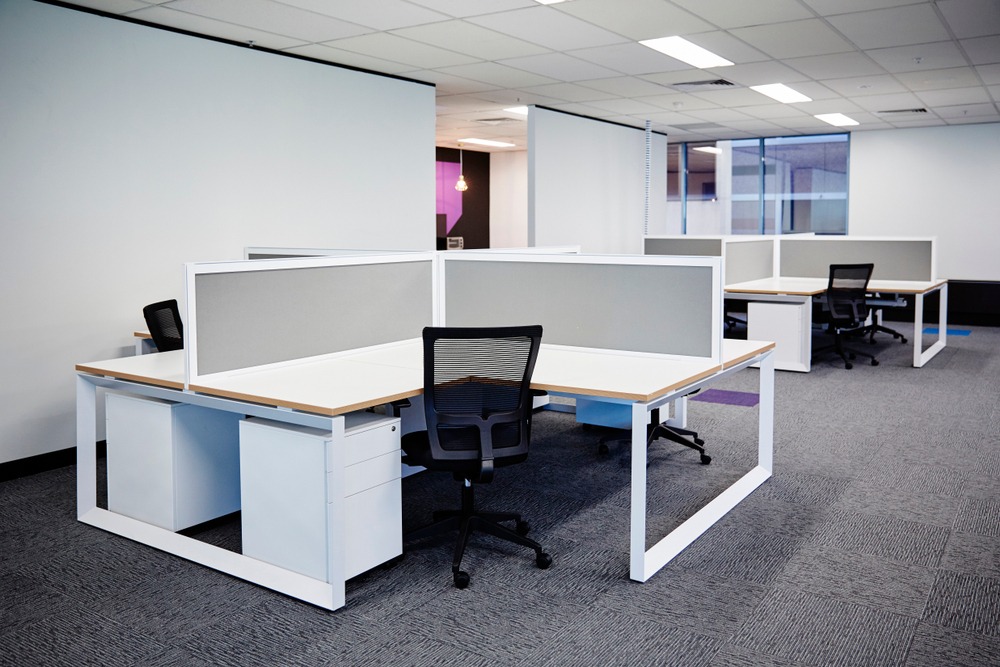
Cubicle Configurations: An Overview
While cubicles are often seen as a less-than-desirable design in popular culture, they’re beneficial in many circumstances, especially when you’re faced with an open room and no place for your employees to sit and work. Sure, you could add some tables and chairs, but open-plan offices aren’t the most conducive to concentration and calm. Cubicles, especially those with high walls that make the space look more like an office, give occupants more privacy and space to get things done independently. Use creative office cubicle designs to customize your space.
The Roomy U-Shape
For maximum counter/desk space and storage, the U-shaped cubicle is best. This is a cubicle where you have three walls, the back and two sides, along with desk space all along each wall.
This is the type of cubicle you want when you want a workstation to be independent of other cubicles. Because you’re not using the wall of one cubicle to provide a wall for an adjacent cubicle, there’s less transfer of vibrations as drawers and cabinets are closed. The divisions between adjacent cubicles are also thicker as you now have two walls between spaces.
U-shaped cubicles are great for open areas where you need to have some staff at workstations but don’t have a lot of existing infrastructure to go on. Take an office with an industrial-style decor, with concrete or brick walls; adding a U-shaped cubicle for an employee’s workstation would provide more space for them to hang up necessary information without having to drill into a wall or use tape, which could leave residue. The padded cubicle wall acts as a bulletin board.
The Wall Height Issue
You have different options for wall-panel height. Some cubicles have very low “walls” that don’t block views into the next cubicle; these are best for collaborative spaces where people might need a divider on the desk, and possibly a little wall space in which to pin up notes. Other cubicle walls can be around mid-height, offering more privacy between workstations but still enough of a view that workers can easily speak with each other. And, of course, there are taller walls that offer more privacy for workers who don’t need to collaborate with someone at another desk.
The Versatile L-Shape
A simple L-shaped cubicle is a lot more versatile than it seems at first. Depending on how you position the cubicle relative to the walls and other cubicles, you can have a semi-open space, such as for a reception desk, or form smaller U-shapes by placing the L-shape against a wall or the panel of another cubicle.
L-shaped cubicles come in a few sizes, so you can create small workstations for new employees in a crowded office rather easily. With high walls, these cubicles can provide a lot of privacy, especially if placed so that one arm sticks out from a back wall and the other crosses in front of the cubicle space.
The Free-Form Space
Finally, you can have cubicles that don’t really conform to a traditional boxy shape. These can be multi-person cubicles where the walls form a relatively open angle, or rounder, more flowing configurations that allow for a number of uses, like a printer and scanner station. This one offers the most variety, but it can require space to ensure everyone can work efficiently when they’re in the cubicle.
If you have questions about office workstations and cubicle design or want to know more about configurations like the U-shaped cubicle desk, contact Cubicle by Design. Custom-designed configurations that function best in your office space help your employees be more productive and have a better work experience.
